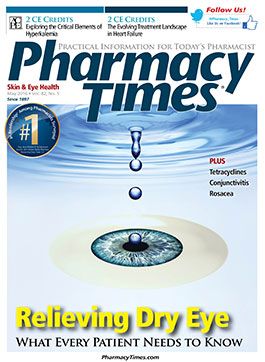Publication
Article
Pharmacy Times
Reducing the Number of Pills for Diversion While Effectively Managing Acute Pain?
Author(s):
Sometimes the mere scope of a problem can deter us from taking action; however, recent meetings with 2 surgeons have reminded me of the power of focused and passionate individuals.
A few months ago, I was contacted by a local Cincinnati oral surgeon asking if we could meet. He wanted to share his ideas and efforts for reducing the prescribing of opiates. Over the years, I have become skeptical of these kinds of calls, as the proposed ideas usually turn out to be impractical and, frankly, a waste of time. However, this surgeon had previously met with a pharmacist of whom I think very highly, so I consented.
I soon learned from the surgeon that his idea was a seemingly well-tested, acute pain protocol—one that could change the role and priority of opiates for acute pain. Furthermore, he had partnered with a local orthopedic surgeon with whom he plans on issuing 32,000-plus fewer opiate dosage units in 2016 versus 2015. (The 2 surgeons indicate that 13 months of ongoing clinical trials demonstrate they have an opiate prescription issuance rate that is 70% less than that of their peers.) In addition to the surgeons indicating superior multimodal pain control by emphasizing ibuprofen and acetaminophen, their PainPack Protocol educates every patient about proper opiate disposal. Their goal is to provide effective multimodal acute pain control, presented in a way that patients can follow, and to reduce diversion by leaving patients with far fewer opiates in their medicine cabinets!
A few years ago, I experienced what is all too common with postoperative prescribing. Upon discharge from my outpatient gallbladder removal, I was given a prescription for 40 oxycodone extra strength to fill on my way home. I filled the prescription and took 2 pills when I got home. When I woke up the next morning, I took 1 more pill in case the pain returned, but it never did. The result was I had 37 class II oxycodone extra-strength tablets destined for my medicine cabinet, with the possibility of becoming diverted.
Fortunately, after telling thousands of individuals not to leave these kinds of drugs in their medicine cabinets, I knew to destroy them properly. Most people do not throw these kinds of drugs away immediately; instead, they linger for weeks, months, even years in medicine cabinets. This subjects these drugs to several potential diversion methods, most of which can fuel someone’s recreational use or addiction, or result in even worse.
So, what’s in it for pharmacists? Simply stated, these surgeons feel they can offer hope! The hope is that someday soon you will encounter patients receiving a more balanced (and appropriate) acute pain control. What I like about the surgeons’ protocol is it gets patients (and physicians) to quickly grasp the role of all 3 medications. Patients should be able to understand the process through a few simple, easy-to-understand graphics. These same visual tools can allow pharmacists to easily and quickly educate patients at the time of dispensing. The graphics can be used to inform patients about the opioid crisis and what everyone can do to properly dispose of remaining opiates. The surgeons also have developed a mobile app that mirrors and enhances this information. The hope is to make all of our jobs more efficient while proactively combatting the opioid crisis. This could provide some long-needed education on the issues surrounding prescription drug abuse while providing adequate pain relief.
These 2 Cincinnati surgeons fully acknowledge the collective responsibility of prescribers. Having once followed the same opioid-dominated postoperative pain regimens as their peers, they also feel that deliverable change will only come when prescribers assume greater responsibility and have a tangible, efficient, easy-to-prescribe, one-stop approach to address and optimize acute pain. The surgeons also believe that the emerging “tsunami” of opiate-focused continuing education will not trigger the desired change in prescribing habits until an integrated solution is available. Their mission is to get this tool into your pharmacies as soon as possible while grabbing the attention of pharmacy industry decision makers.
Sometimes the mere scope of a problem can deter us from taking action. However, recent meetings with these surgeons have reminded me of the power of focused and passionate individuals. I found the surgeons’ approach to be incredibly simple, yet seemingly effective. If you feel that you can assist in helping to advance this timely mission, or you know someone who can, please contact me directly and I will get you in touch with the surgeons who are proving what can be done. My email address is below. Thank you.
Cmdr Burke is a 40-year veteran of law enforcement and the past president of the National Association of Drug Diversion Investigators. He can be reached by e-mail at [email protected] or via the website www.rxdiversion.com.

Newsletter
Stay informed on drug updates, treatment guidelines, and pharmacy practice trends—subscribe to Pharmacy Times for weekly clinical insights.






